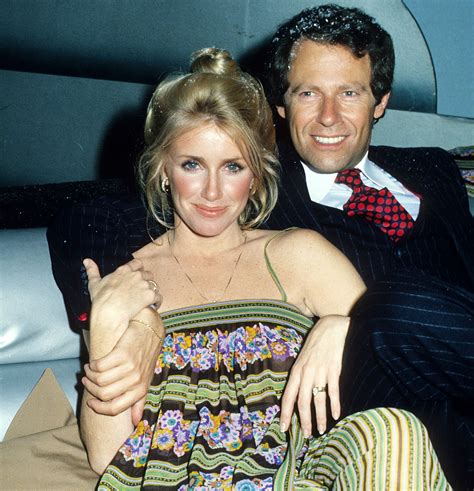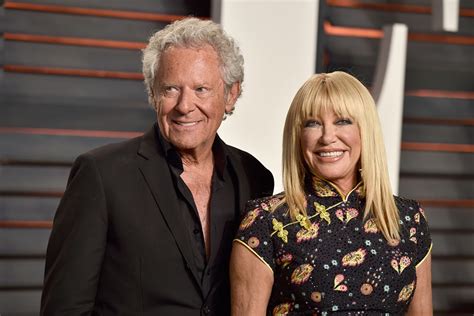
Justin Baldoni, known for his role in “Jane the Virgin,” is embroiled in a legal dispute with Blake Lively’s beverage company, Betty Buzz, over the use of the term “Aman,” an acronym for “A Mom’s Answer Now,” in connection with his wife Emily Baldoni’s podcast and community platform of the same name, dedicated to motherhood. Lively’s company, Betty Buzz, argues that the “Aman” brand infringes on its trademarks, particularly its Betty Booze-Free Sparkling Drink cans, which bear the trademark “B.” Baldoni, countering Lively’s claims, refuses to cease using “Aman” and seeks legal affirmation that his brand does not infringe upon Betty Buzz’s trademarks, setting the stage for a potential courtroom showdown over branding and intellectual property rights.
The legal battle, initiated in the U.S. District Court for the Central District of California, stems from the alleged similarity between Baldoni’s “Aman” and Lively’s distinctive “B” logo used on Betty Buzz cans. Betty Buzz filed a cease-and-desist letter, asserting that the “Aman” mark creates confusion among consumers and dilutes the Betty Buzz brand. Baldoni responded by filing a lawsuit seeking a declaratory judgment that his use of “Aman” does not infringe upon Betty Buzz’s trademarks, maintaining that there is no likelihood of consumer confusion between the two brands.
According to court documents, Baldoni contends that the target audience, marketing channels, and overall branding of “Aman” are sufficiently distinct from those of Betty Buzz, thereby negating any potential for consumer confusion. He asserts that “Aman” is focused on building a community around motherhood and offering resources through a podcast and online platform, while Betty Buzz is primarily a beverage company.
The heart of the dispute revolves around trademark law, which protects brand names and logos from being used by others in a way that could cause confusion in the marketplace. To succeed in a trademark infringement claim, Betty Buzz must demonstrate that its trademark is valid, that Baldoni’s use of “Aman” creates a likelihood of confusion, and that this confusion could harm Betty Buzz’s reputation or sales.
Baldoni’s legal team argues that the “Aman” brand is easily distinguishable from Betty Buzz due to several factors: the different industries they operate in (media/community vs. beverage), the different target audiences (mothers vs. general consumers of sparkling beverages), and the distinct visual and auditory characteristics of the brands.
The case highlights the complexities of trademark law in the digital age, where branding extends beyond traditional product categories and encompasses online communities, podcasts, and social media platforms. The court’s decision could set a precedent for how trademark law applies to brands that operate across different industries and engage with consumers through diverse channels. The dispute also underscores the importance of conducting thorough trademark searches before launching a new brand to avoid potential conflicts and legal challenges.
The legal battle between Baldoni and Lively is not just a fight over trademarks; it is also a clash of brand identities. Baldoni’s “Aman” represents a community-driven platform focused on empowering mothers, while Betty Buzz aims to provide consumers with high-quality, non-alcoholic sparkling beverages. The outcome of the case will determine whether these two brands can coexist in the marketplace or whether one must yield to the other.
Adding to the intrigue of the legal drama, both Baldoni and Lively are well-known figures in the entertainment industry. Baldoni gained fame for his role in “Jane the Virgin,” while Lively is a successful actress and businesswoman. The involvement of these high-profile celebrities has drawn considerable media attention to the case, further raising the stakes.
Moreover, the case touches on broader issues related to branding and marketing in the age of social media. Both Baldoni and Lively have leveraged their celebrity status and social media presence to promote their respective brands. The legal dispute underscores the importance of protecting brand assets in the digital realm and the challenges of enforcing trademark rights in a rapidly evolving online landscape.
As the legal battle unfolds, it remains to be seen how the court will weigh the competing interests of the parties involved. The outcome of the case will have significant implications for trademark law, branding, and the entertainment industry. It will also serve as a cautionary tale for entrepreneurs and businesses seeking to protect their intellectual property rights in an increasingly competitive marketplace.
The legal filings detail that “Aman” was established by Emily Baldoni as a platform for mothers seeking support and connection, offering resources and a community-focused approach. In contrast, Betty Buzz is a beverage company founded by Blake Lively, focusing on premium sparkling mixers and non-alcoholic drinks.
The dispute escalated following a cease-and-desist letter from Betty Buzz’s legal team, claiming that the “Aman” brand infringed on Betty Buzz’s trademarks and created a likelihood of confusion among consumers. In response, Justin Baldoni and his team filed a lawsuit seeking a declaratory judgment, arguing that the two brands operate in distinct markets and target different audiences, thereby negating any potential for confusion.
The legal documents emphasize that “Aman” and Betty Buzz serve different purposes and cater to different demographics. “Aman” focuses on motherhood and parenting, offering podcasts, articles, and community forums tailored to the needs of mothers. Betty Buzz, on the other hand, is a beverage company that produces sparkling mixers and drinks for a broader consumer base.
Baldoni’s legal team asserts that the “Aman” brand has a unique identity and purpose that sets it apart from Betty Buzz. They argue that the “Aman” brand is associated with a supportive online community for mothers, while Betty Buzz is a beverage company that sells sparkling drinks. They contend that there is no reasonable basis for consumers to confuse the two brands.
The legal battle highlights the importance of conducting thorough trademark searches and seeking legal advice before launching a new brand or product. It also underscores the complexities of trademark law and the challenges of protecting brand assets in a competitive marketplace.
The case raises questions about the scope of trademark protection and the extent to which trademark owners can prevent others from using similar marks in different industries. The court will need to consider the specific facts and circumstances of the case, including the similarity of the marks, the relatedness of the goods or services, and the likelihood of consumer confusion.
The legal dispute between Baldoni and Lively has attracted significant media attention, due in part to their celebrity status. The case has been widely reported in entertainment news outlets and legal publications.
The outcome of the case could have broader implications for trademark law and branding. It could set a precedent for how trademark law applies to brands that operate in different industries and target different audiences. It could also influence how trademark owners protect their brand assets in the digital age.
The legal battle between Baldoni and Lively is a complex and multifaceted dispute that involves issues of trademark law, branding, and celebrity endorsements. The case is likely to continue to attract media attention as it progresses through the courts.
The lawsuit filed by Baldoni seeks a declaration from the court that his use of the “Aman” mark does not infringe upon Betty Buzz’s trademarks. A declaratory judgment is a legal remedy that allows a party to seek a court’s determination of its rights and obligations in a particular situation.
In this case, Baldoni is seeking a declaratory judgment to establish that his use of “Aman” does not violate Betty Buzz’s trademark rights. He argues that the two brands are sufficiently distinct and that there is no likelihood of consumer confusion.
The lawsuit also seeks to prevent Betty Buzz from taking any further action to interfere with Baldoni’s use of the “Aman” mark. This could include preventing Betty Buzz from sending cease-and-desist letters or filing a lawsuit against Baldoni.
The legal battle between Baldoni and Lively underscores the importance of protecting intellectual property rights. Trademarks are valuable assets that can help businesses distinguish their products and services from those of their competitors.
Trademark owners have the right to prevent others from using similar marks in a way that could cause confusion among consumers. However, trademark rights are not absolute. They are subject to certain limitations, such as the fair use doctrine.
The fair use doctrine allows others to use a trademark without permission for certain purposes, such as criticism, commentary, news reporting, teaching, scholarship, or research. The court will need to consider whether Baldoni’s use of “Aman” falls within the scope of the fair use doctrine.
The legal dispute between Baldoni and Lively is a reminder that trademark law is a complex and evolving area of law. Businesses need to be aware of their trademark rights and take steps to protect them.
The outcome of the case could have significant implications for trademark law and branding. It could set a precedent for how trademark law applies to brands that operate in different industries and target different audiences. It could also influence how trademark owners protect their brand assets in the digital age.
Baldoni’s move to seek a declaratory judgment can be interpreted as a proactive legal strategy. Instead of waiting for Betty Buzz to potentially sue him for trademark infringement, he took the initiative to bring the matter before the court and seek a ruling in his favor. This strategy allows him to control the narrative and potentially resolve the dispute more quickly and efficiently.
Moreover, Baldoni’s lawsuit challenges the scope of Betty Buzz’s trademark rights. He argues that Betty Buzz’s trademark rights should not extend to prevent him from using the “Aman” mark in connection with his wife’s podcast and online community for mothers. This argument could have broader implications for trademark law, as it raises questions about the extent to which trademark owners can prevent others from using similar marks in different industries.
The legal battle between Baldoni and Lively also highlights the importance of conducting thorough trademark clearance searches before launching a new brand or product. A trademark clearance search can help identify potential conflicts with existing trademarks and reduce the risk of trademark infringement lawsuits.
In this case, it is unclear whether Baldoni conducted a trademark clearance search before launching the “Aman” brand. If he did, he may have concluded that there was no likelihood of confusion with Betty Buzz’s trademarks. However, Betty Buzz clearly disagrees with this assessment, as evidenced by its cease-and-desist letter and threat of legal action.
The legal dispute between Baldoni and Lively underscores the challenges of navigating the complex world of trademark law. Trademark law is a highly specialized area of law that requires careful attention to detail. Businesses should seek legal advice from experienced trademark attorneys to ensure that they are complying with trademark law and protecting their brand assets.
The case also illustrates the power of branding in the modern marketplace. Brands are valuable assets that can help businesses differentiate their products and services from those of their competitors. A strong brand can create customer loyalty and drive sales.
However, brands are also vulnerable to infringement. Trademark owners must be vigilant in protecting their brand assets from unauthorized use. This may involve sending cease-and-desist letters, filing lawsuits, and monitoring the marketplace for infringing uses.
The legal battle between Baldoni and Lively is a reminder that trademark law is an important tool for protecting brand assets. By taking steps to protect their trademarks, businesses can maintain their competitive edge and build strong brands.
The court’s decision in this case could have far-reaching implications for trademark law and branding. It will be closely watched by trademark attorneys, businesses, and the entertainment industry.
The case is likely to involve extensive discovery, including the production of documents, depositions of witnesses, and expert testimony. The court will need to consider a variety of factors, including the similarity of the marks, the relatedness of the goods or services, the likelihood of consumer confusion, and the intent of the parties.
The court’s decision could be appealed to a higher court, such as the Ninth Circuit Court of Appeals. The appeal process could take several years to complete.
In the meantime, the legal battle between Baldoni and Lively is likely to continue to attract media attention. The case serves as a reminder that trademark law is a complex and important area of law that affects businesses of all sizes.
The dispute also serves as a case study in crisis communication. Both Baldoni and Lively have a strong public image, and how they handle this legal challenge will significantly impact their brand perceptions. Maintaining transparency and demonstrating respect for intellectual property rights will be crucial.
The case also brings to light the balancing act celebrities face when they venture into the business world. Their fame can be a double-edged sword, attracting attention but also scrutinizing their business practices more intensely.
Further complicating the matter is the subjective nature of “likelihood of confusion.” What one consumer perceives as distinct, another might see as easily conflated. Expert witnesses, often marketing and branding specialists, are typically brought in to analyze consumer behavior and provide opinions on this matter.
The outcome of this case hinges on the specifics of trademark law, but it also touches upon broader cultural and societal trends, such as the rise of celebrity-endorsed brands and the increasing importance of online communities.
The legal expenses associated with trademark litigation can be substantial, including attorney fees, expert witness fees, and court costs. This underscores the importance of having adequate legal counsel and a solid understanding of trademark law.
From a strategic perspective, Baldoni’s lawsuit could be seen as an attempt to force a settlement with Betty Buzz. By bringing the matter before the court, he may be hoping to negotiate a resolution that allows him to continue using the “Aman” mark without infringing on Betty Buzz’s trademarks.
The case also raises ethical questions about the responsibilities of celebrities as brand ambassadors. When celebrities endorse a product or service, they lend their name and reputation to it. They have a responsibility to ensure that the product or service is of high quality and does not infringe on the rights of others.
The legal battle between Baldoni and Lively is a complex and high-stakes dispute that could have significant implications for trademark law, branding, and the entertainment industry. It is a reminder that businesses must be vigilant in protecting their intellectual property rights and that trademark law is an important tool for doing so.
The court proceedings will involve scrutiny of branding strategies, marketing materials, and target audience demographics for both “Aman” and Betty Buzz. Experts in brand management and consumer behavior may be called upon to testify about the likelihood of confusion between the two brands.
The case highlights the complexities of trademark law in the age of digital media. The internet has made it easier for businesses to reach a global audience, but it has also made it more difficult to protect trademarks from infringement.
The legal dispute between Baldoni and Lively underscores the importance of seeking professional legal advice before launching a new brand or product. A trademark attorney can help businesses conduct a thorough trademark search, assess the risk of infringement, and develop a strategy for protecting their intellectual property rights.
The case also serves as a reminder that trademark law is constantly evolving. As new technologies and business models emerge, the courts must adapt trademark law to address the challenges of the digital age.
The legal battle between Baldoni and Lively is likely to continue to attract media attention as it progresses through the courts. The case is a reminder that trademark law is an important tool for protecting brand assets and that businesses must be vigilant in enforcing their trademark rights.
Frequently Asked Questions (FAQ)
1. What is the core dispute between Justin Baldoni and Blake Lively’s Betty Buzz?
The dispute centers around Justin Baldoni’s wife’s “Aman” brand (A Mom’s Answer Now), a podcast and online community for mothers, and Blake Lively’s Betty Buzz beverage company. Betty Buzz alleges that “Aman” infringes on its trademarks, particularly the “B” logo on its cans, arguing it causes consumer confusion. Baldoni denies infringement and seeks legal affirmation that his brand does not violate Betty Buzz’s trademarks.
2. Why does Betty Buzz believe “Aman” infringes on its trademarks?
Betty Buzz contends that the similarity between the “Aman” mark and its distinctive “B” logo could confuse consumers, potentially leading them to believe that “Aman” is affiliated with or endorsed by Betty Buzz. They argue this could dilute the Betty Buzz brand and harm its reputation.
3. What is Justin Baldoni’s argument against Betty Buzz’s claims?
Baldoni argues that the two brands operate in different industries (media/community vs. beverage), target distinct audiences (mothers vs. general consumers), and have different branding and marketing strategies, making consumer confusion unlikely. He believes “Aman” is clearly associated with motherhood and parenting resources, while Betty Buzz is a beverage company.
4. What is a declaratory judgment, and why did Baldoni file a lawsuit seeking one?
A declaratory judgment is a court ruling that clarifies the legal rights and obligations of parties in a dispute. Baldoni filed a lawsuit seeking a declaratory judgment to proactively establish that his use of “Aman” does not infringe on Betty Buzz’s trademarks. This prevents Betty Buzz from potentially suing him later and allows him to control the legal narrative.
5. What are the potential implications of this case for trademark law and branding?
The outcome of this case could set a precedent for how trademark law applies to brands operating in different industries and engaging with consumers through diverse channels, particularly online communities and podcasts. It could also influence how trademark owners protect their brand assets in the digital age and the extent to which they can prevent others from using similar marks in related fields.









